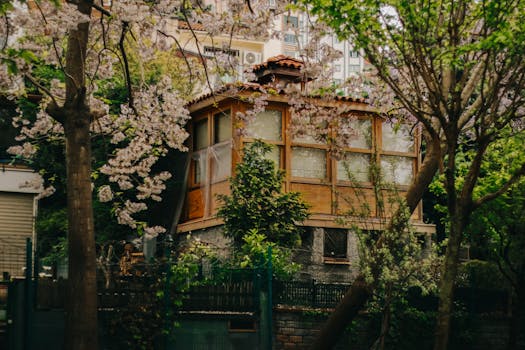
Urban Green Spaces: The Future of Outdoor Living in European Cities by 2025
Urban Green Spaces are at the forefront of transforming the future of outdoor living in European cities by 2025. As the world becomes increasingly urbanized, the need for green spaces in cities has never been more pressing. Not only do these spaces provide a tranquil escape from the hustle and bustle of city life, but they also play a crucial role in maintaining the health and wellbeing of urban residents.
Introduction to Urban Green Spaces
Urban green spaces refer to any area of vegetation in an urban environment, including parks, gardens, green roofs, and even urban forests. These spaces are designed to provide a range of benefits, from improving air quality and reducing urban heat islands to promoting physical activity and mental wellbeing.
Benefits of Urban Green Spaces
The benefits of urban green spaces are numerous and well-documented. Some of the most significant advantages include:
- Improved air quality: Urban green spaces help to remove pollutants from the air, improving the overall quality of the air we breathe.
- Reduced urban heat islands: Green spaces can help to mitigate the urban heat island effect, which occurs when built-up areas absorb and retain heat.
- Promoting physical activity: Urban green spaces provide opportunities for outdoor recreation, exercise, and sports, helping to promote physical activity and reduce the risk of chronic diseases.
- Mental wellbeing: Spending time in nature has been shown to have a positive impact on mental health, reducing stress and anxiety and improving mood.
Examples of Urban Green Spaces in European Cities
Many European cities are already embracing the concept of urban green spaces, with some truly innovative and inspiring examples. Some of the most notable include:
- The High Line in London: An elevated park built on an old railway line, providing a unique and tranquil green space in the heart of the city.
- The Park de la Ciutadella in Barcelona: A large and vibrant park featuring a lake, fountain, and plenty of green space for recreation and relaxation.
- The Tempelhofer Feld in Berlin: A former airport turned urban park, offering a range of activities and events, including cycling, skating, and picnicking.
The Future of Urban Green Spaces in European Cities
As we look to the future, it’s clear that urban green spaces will play an increasingly important role in shaping the outdoor living experience in European cities. With the European Union’s Green Infrastructure Strategy aiming to increase the coverage of green infrastructure in urban areas by 2025, we can expect to see even more innovative and sustainable green spaces popping up across the continent.
In conclusion, urban green spaces are a vital component of creating sustainable, healthy, and thriving cities. As we move forward, it’s essential that we prioritize the development and maintenance of these spaces, ensuring that they continue to provide a range of benefits for generations to come.






